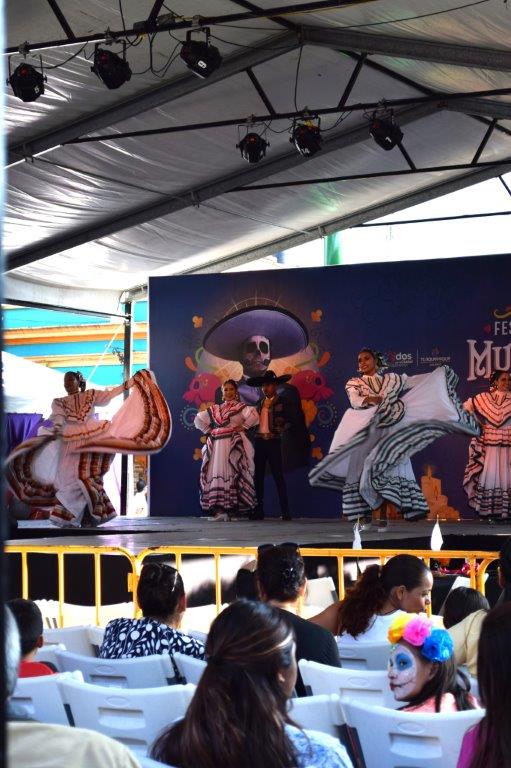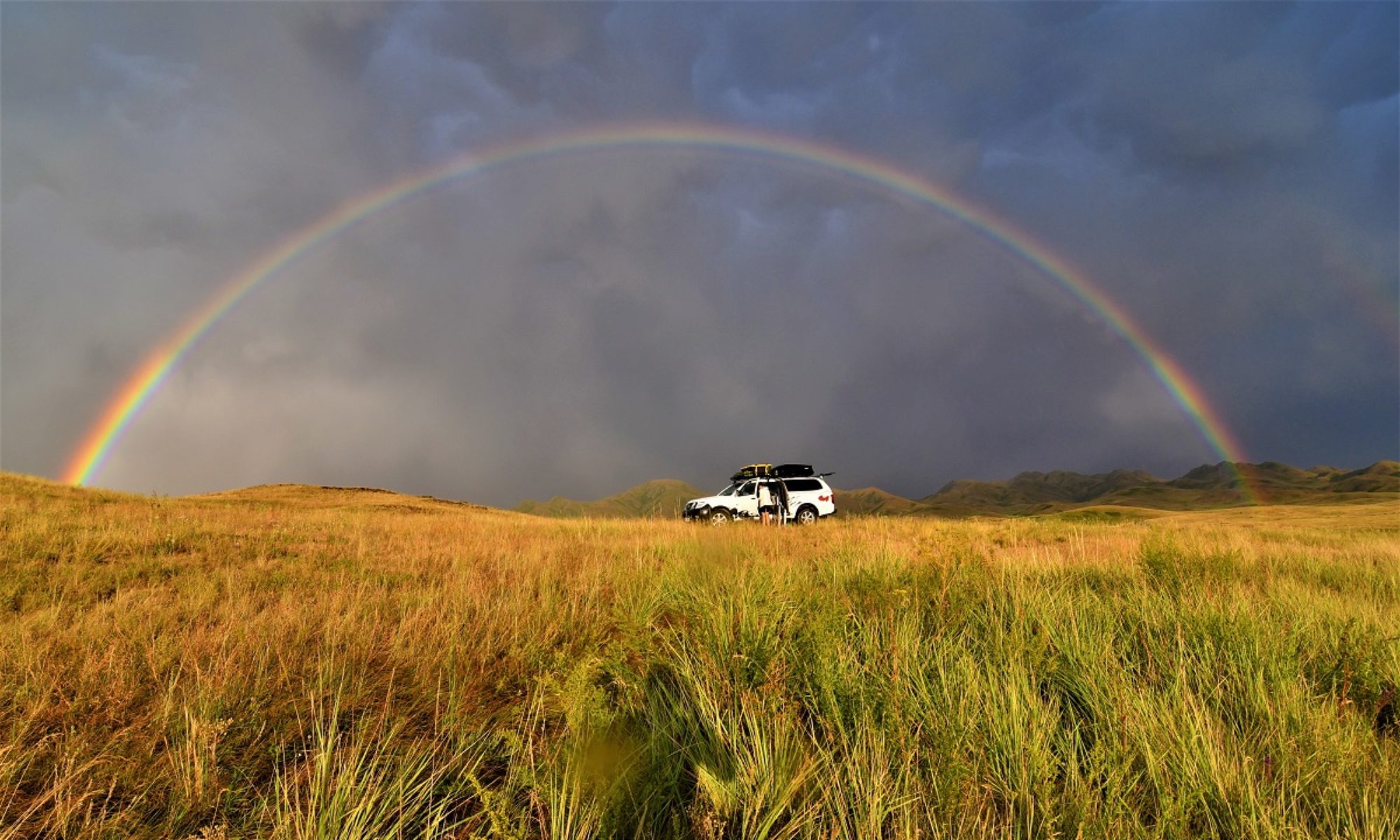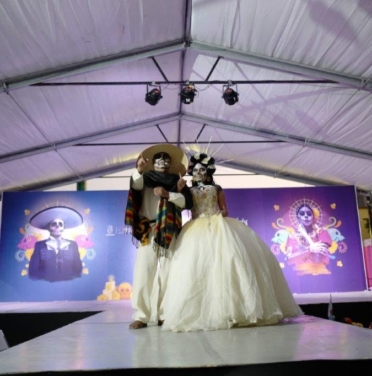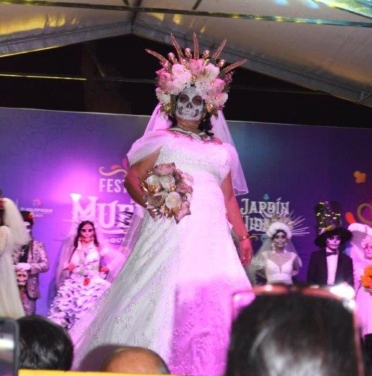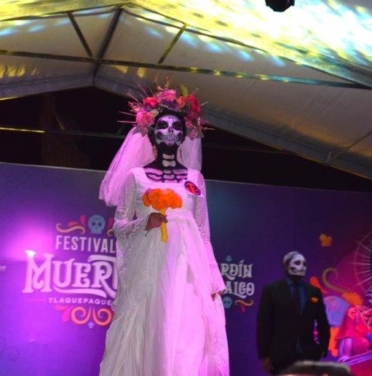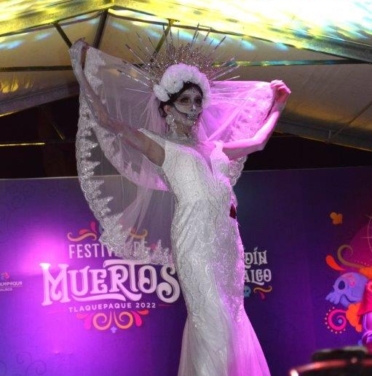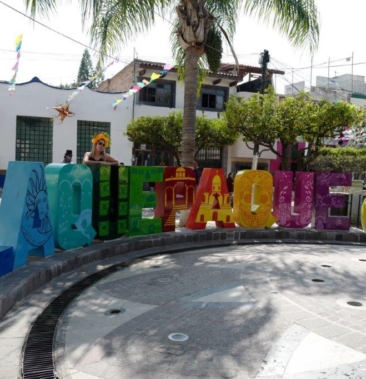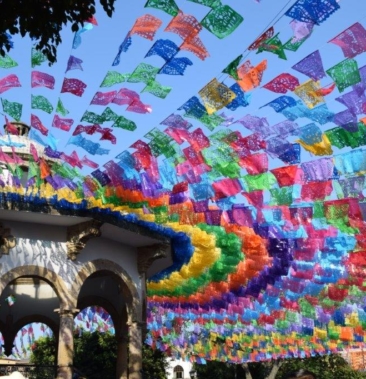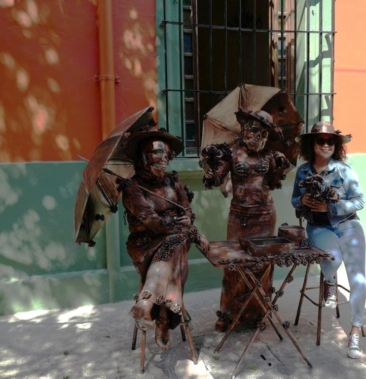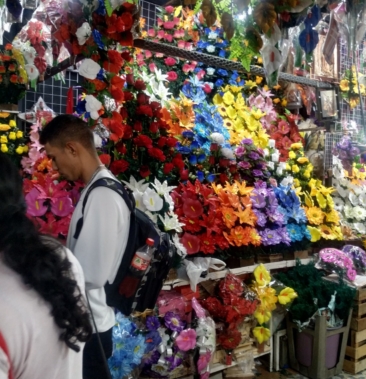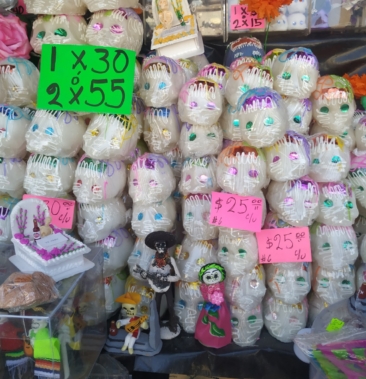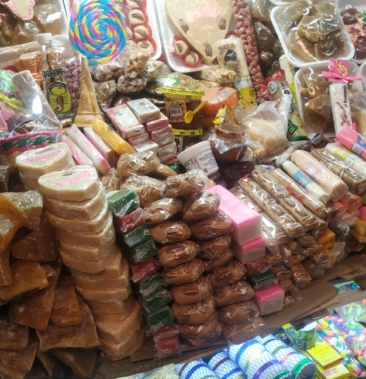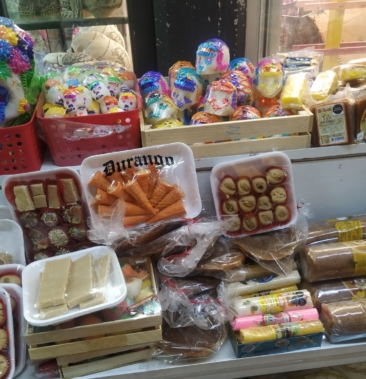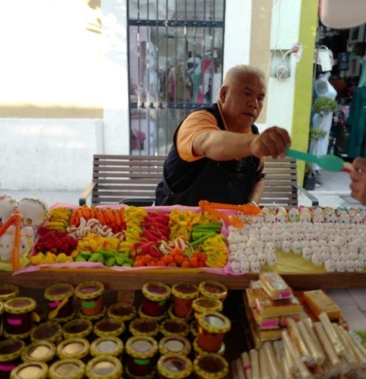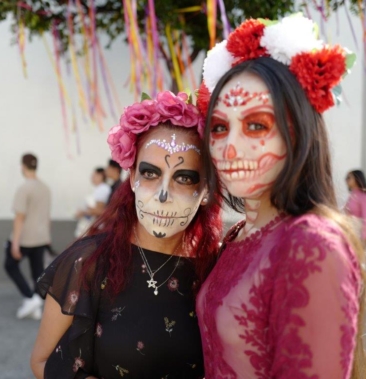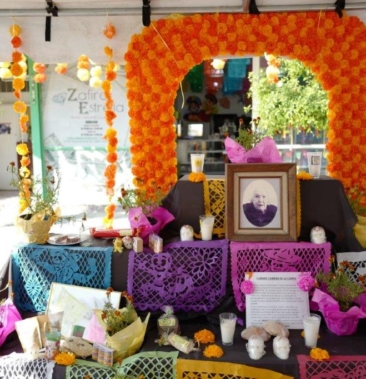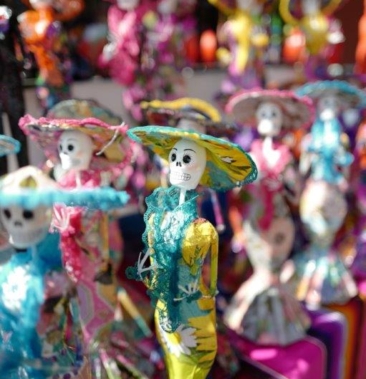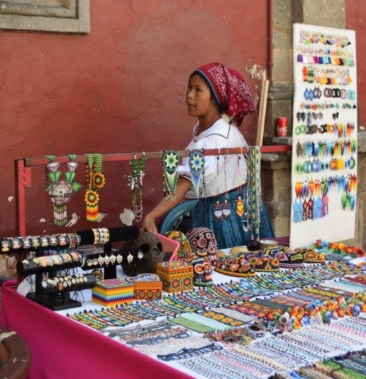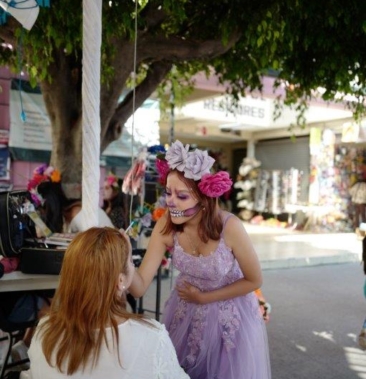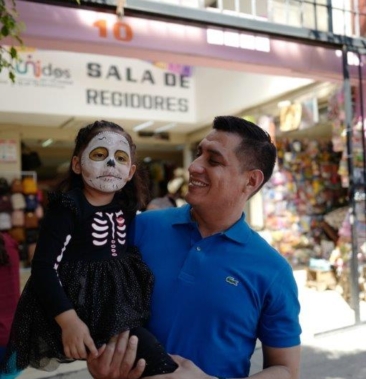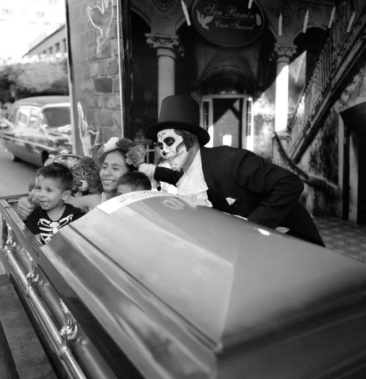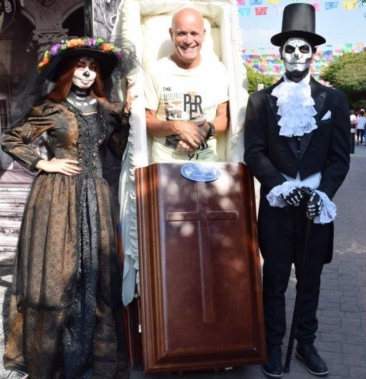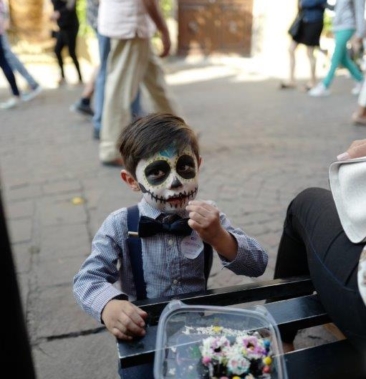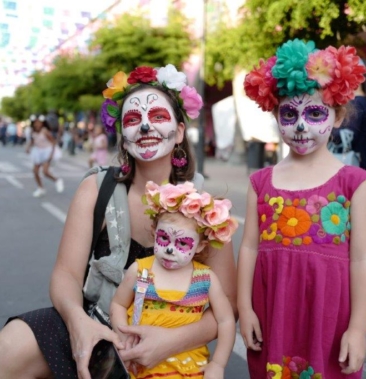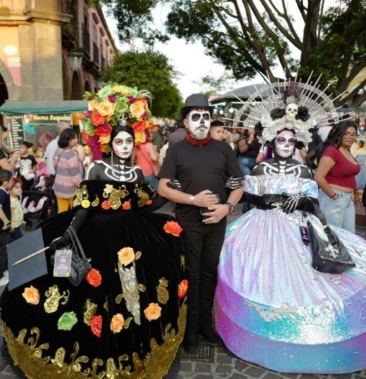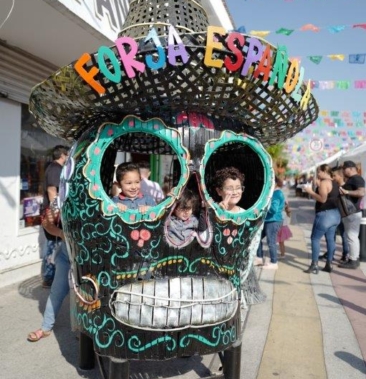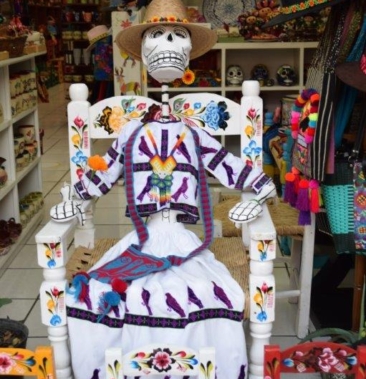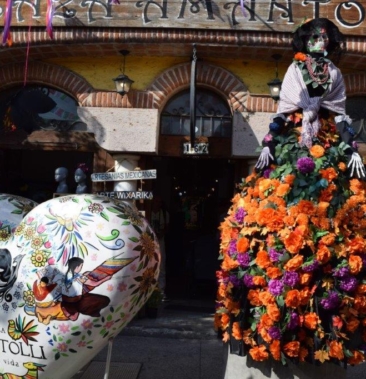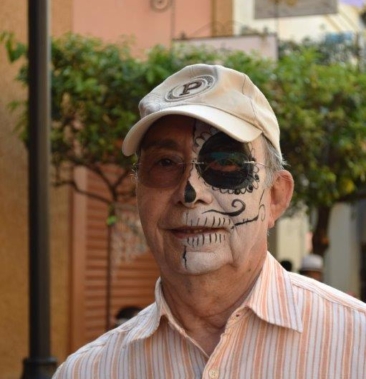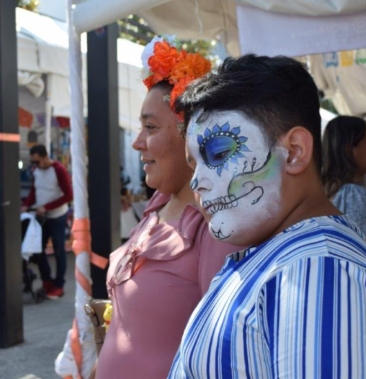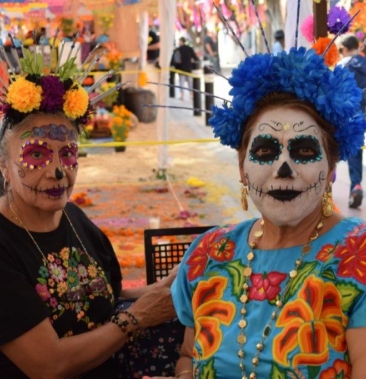(based on article on Clarin.com)
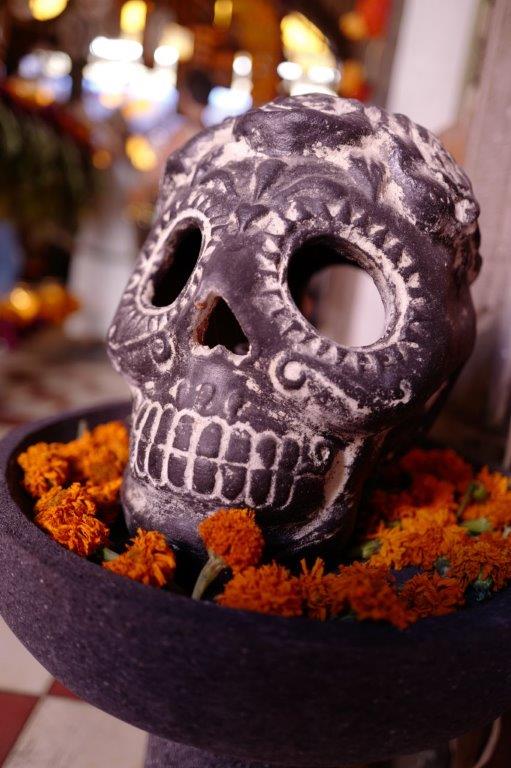
The Day of the Dead is one of the most important celebrations in Mexico.
Officially, the celebration of the Day of the Dead takes place on November 1 and 2 but the festivities usually last a week or so depending on the area of the country.
Although due to its proximity to Halloween in the almanac, the two celebrations are associated , they have little or nothing to do with each other.
According to the Catholic calendar, November 1 corresponds to All Saints Day, a day dedicated to the “little dead” or children, and November 2 to the Faithful Departed, that is, adults.
The Day of the Dead -also called Day of the Faithful Departed- is a day in which tribute and thanks are paid to the deceased.
In Mexico, in particular, death is seen as another step in life , which is why those who are no longer on this planet are celebrated and honored. All of them are remembered with images, music, dances and stories, and in this way, tradition says, their souls are kept alive.
Product of the mixture of indigenous and Christian traditions , on the Day of the Dead the loss of loved ones is not mourned or lamented. On the contrary, death is “celebrated”: they are days to share a moment with all those who are not there but who are still very present in our affection.

How is the Day of the Dead celebrated?
Every year, families place offerings and altars decorated with flowers, confetti, sugar skulls, bread of the dead, mole or some dish that their relatives to whom the offering is dedicated liked.The festivities also include decorating the tombs with flowers and often making altars on the tombstones, which in indigenous times had great meaning because it was thought that it helped lead the souls to move on a good path after death.
Tradition also indicates that, to facilitate the return of souls to earth ,marigold flower petals should be spread and candles placed tracing the path they are going to travel so that these souls do not get lost and reach their destination.
On November 3 , the following day, the tradition ends . After removing the Day of the Dead offering , the living can dispose of the sweets, food and drinks that are on the altar and distribute it among family, neighbours and friends.
We read online that they were celebrations all week in a suburb of Guadalajara called Tlaquepaque. It was just one bus ride away from us so we went there for the day.
This area is known for its shops selling crafts from the local region and other States in Mexico and is partially pedestrianised. It was midday but already busy with people browsing the goods on offer, getting their face painted, buying little offerings for the altar or the cemetery or simply enjoying a day out with family and friends.
Today there are a couple of shows in the public square: one of traditional folk dances and the other a modern version called “Grupo Mextil” before the highlight of the evening: the “Gala de Novias Catrinas”. This is a sort of fashion show where young women “Catrinas” ( sometimes couples), are dressed as brides but have their face painted as a zombie or other design linked to the Day of the Dead. It makes for a strange combination! Each bride parades on the stage and at the end of the show the public decides which one had the best outfit.
[click on picture to open gallery]
Extract from one of the shows of folk dances.All dancers had their faces painted!
